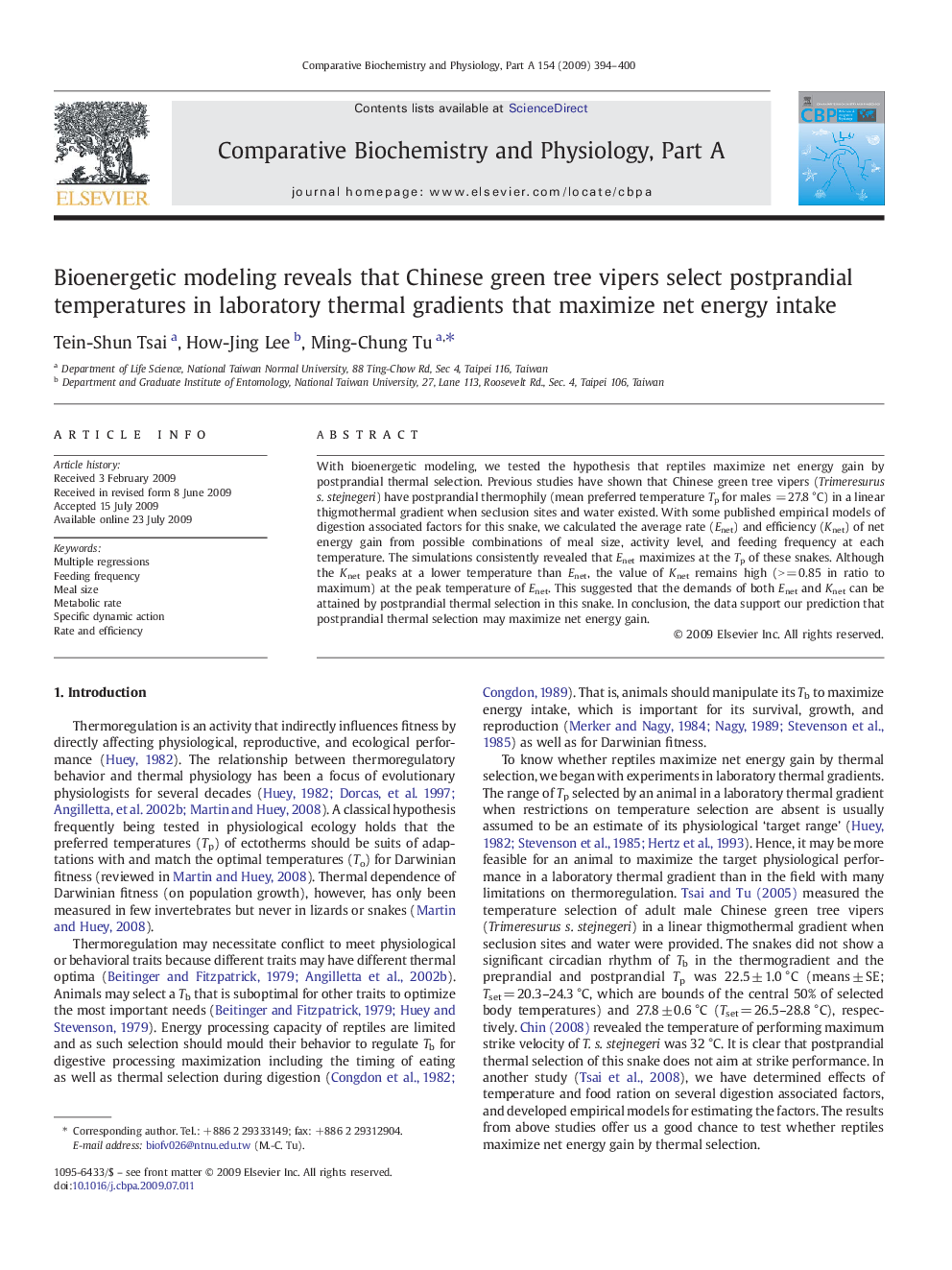| Article ID | Journal | Published Year | Pages | File Type |
|---|---|---|---|---|
| 1972736 | Comparative Biochemistry and Physiology Part A: Molecular & Integrative Physiology | 2009 | 7 Pages |
With bioenergetic modeling, we tested the hypothesis that reptiles maximize net energy gain by postprandial thermal selection. Previous studies have shown that Chinese green tree vipers (Trimeresurus s. stejnegeri) have postprandial thermophily (mean preferred temperature Tp for males = 27.8 °C) in a linear thigmothermal gradient when seclusion sites and water existed. With some published empirical models of digestion associated factors for this snake, we calculated the average rate (Enet) and efficiency (Knet) of net energy gain from possible combinations of meal size, activity level, and feeding frequency at each temperature. The simulations consistently revealed that Enet maximizes at the Tp of these snakes. Although the Knet peaks at a lower temperature than Enet, the value of Knet remains high (> = 0.85 in ratio to maximum) at the peak temperature of Enet. This suggested that the demands of both Enet and Knet can be attained by postprandial thermal selection in this snake. In conclusion, the data support our prediction that postprandial thermal selection may maximize net energy gain.
